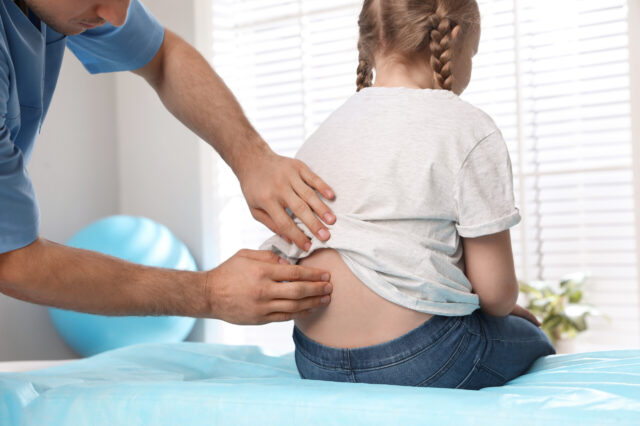Definition
Scoliosis surgery is recommended for children who must correct an abnormal curving of the spine (
scoliosis). Within the Shriner’s Center of Excellence at UF Health, nationally recognized for its performance in pediatric orthopaedic care, this procedure is done to straighten your child's spine, while also aligning their shoulders and hips to solve their back problems.
Alternative names
Spinal curvature surgery - child; Kyphoscoliosis surgery - child; Video-assisted thoracoscopic surgery - child; VATS – child
Description
Before the operation begins, trained physicians will give your child
general anesthesia to put them into a deep sleep and prevent them from feeling any pain during the surgery.
Different approaches use different types of metal instruments along with bone grafts to correct and support the spine. These are usually left in the body after the bone fuses together.
The surgeon may also do the procedure using a special video camera. Special equipment will also be used to keep an eye on the nerves that come from the spine to make sure they are not damaged.
Scoliosis surgery often takes 4-6 hours.
Why the procedure is performed
Once braces no longer provide the benefit of preventing the curve from worsening, the child's provider will recommend surgery. It’s important to take this step to correct scoliosis for many reasons.
First of all, severe scoliosis can be very painful. The condition can also have an appearance that is a major concern. Plus, the child’s breathing can also be impacted depending on the curve.
The decision as it pertains to the timing of the surgery isn’t the same for everyone. This timing usually relates to the growth of your child’s bones since curves should not get much worse after they’re finished growing.
Therefore, surgeons may decide to wait until after this time period, but they may suggest doing it before then if the curve is large enough or is progressive enough. This decision-making principle is often followed for children and adolescents with scoliosis of unknown cause (idiopathic scoliosis).
Risks
Just like any other type of surgery, there may be complications with any of the procedures for scoliosis repair. These issues can stem from scoliosis surgery or they can develop in the future.
Your provider will discuss these with you at the appropriate time, but rest assured that you are in good hands at UF Health.
References
Thomas MA, Therattil M. Scoliosis and kyphosis. In: Frontera WR, Silver JK, Rizzo TD, eds. Essentials of Physical Medicine and Rehabilitation: Musculoskeletal Disorders, Pain, and Rehabilitation. 3rd ed. Philadelphia, PA: Elsevier Saunders; 2015:chap 152.
Warner WC, Sawyer JR. Scoliosis and kyphosis. In: Azar FM, Beaty JH, Canale ST, eds. Campbell's Operative Orthopaedics. 13th ed. Philadelphia, PA: Elsevier; 2017:chap 44.
Review Date
8/13/2018
Reviewed By
Dr. Laurel Blakemore, MD, Division Chief, Pediatric Orthopaedics.





